
The Three Bridge Fiasco and Communications on the Water
The Singlehanded Sailing Society’s crazy-fun Three Bridge Fiasco is coming up on Saturday, January 25. (Register at https://jibeset.net/JACKY000.php?RG=T006291399 by Wednesday, January 22). Now is the time to get all sorts of advice for the biggest race on the West Coast.
We have advice, too. We’ll start with some safety stuff around lookouts and retirement.
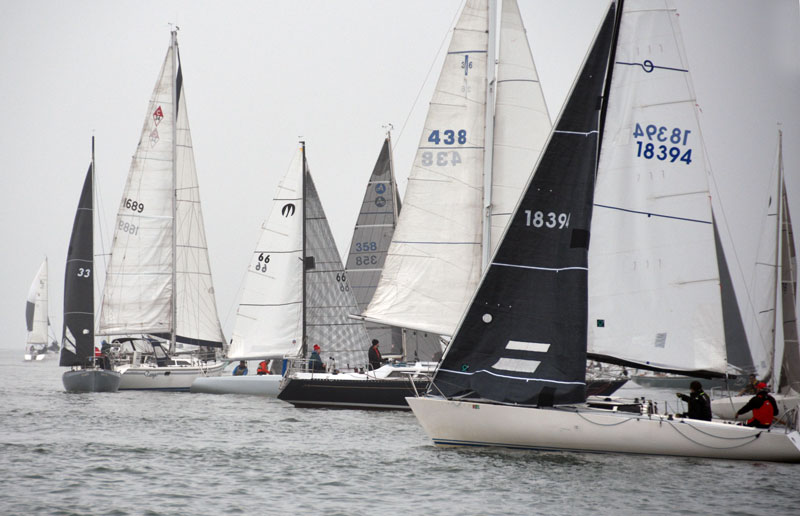
The Three Bridge Fiasco is exclusively for doublehanded and singlehanded boats. Around 300 entries make for congestion in the starting area. (As of this morning, 295 boats had signed up.) It’s crowded at the start. And it’s close-quarters maneuvering at some of the mark roundings.
Be extra-vigilant for other boats.
Even if you have right of way.
It is much better to file a protest than an insurance claim.
Retiring from the Race
Knowing how to retire is important — the race committee will need all skippers who check in to retire promptly if and when they decide they will not finish.
The race committee requests that you send a text to the number in the sailing instructions, even though your first instinct might be to pick up your VHF radio.
VHF is the world’s most limited, primitive cell network. It is the equivalent of having just a single cell antenna close to sea level. Only one person can talk at a time, and if multiple people talk at once there’s no feedback that they have blocked one another.
Text messages have the following advantages over VHF, many of which are also advantages over voice calls:
-
Text works when the boat does not have good line of sight to the race committee (RC).
-
Text works when the boat is far away from the RC.
-
Text is low bandwidth, so it works where a voice call would cut out or drop.
-
Text does not suffer from wind noise.
-
Text cannot be misheard.
-
Text is concurrent; many racers can text at once.
-
Text is asynchronous; it enables the RC to prioritize what they are doing, like taking finishes, and then contend with important-but-less-urgent retirements when they have a minute.
-
Text is logged automatically; the RC never has to wonder if you called in during a moment away from their clipboard and they did not get you written down.
-
Text can give you, the racer, evidence that the RC received your text.
Cell phone companies have spent billions of dollars putting cell antennas on towers on top of buildings on top of hills. And they’re ubiquitous. For example, even if you do not have line of sight from the east side of Yerba Buena back to the Golden Gate Yacht Club, where the race committee will be stationed, odds are very good you have line of sight to a cell tower in Emeryville that can talk to another cell tower near the GGYC parking lot.
Cell vs. VHF
Here’s the map of cell equipment, just in San Francisco:
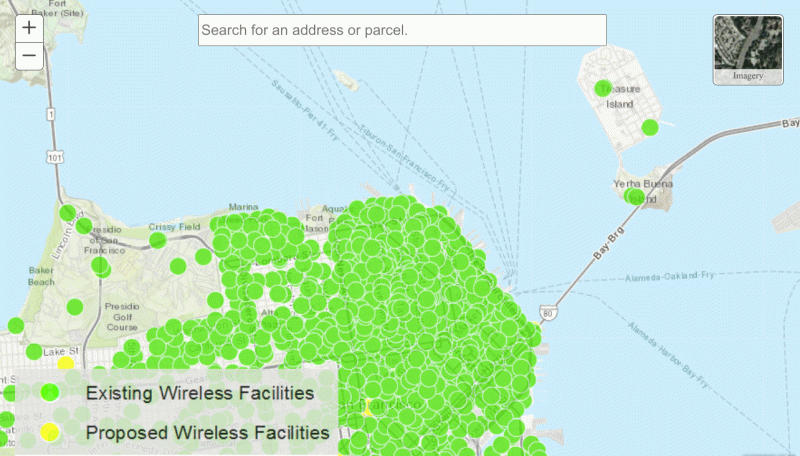
Contrast that with a single VHF antenna in the Marina District that boats off Market Street or east of Treasure Island might want to reach:
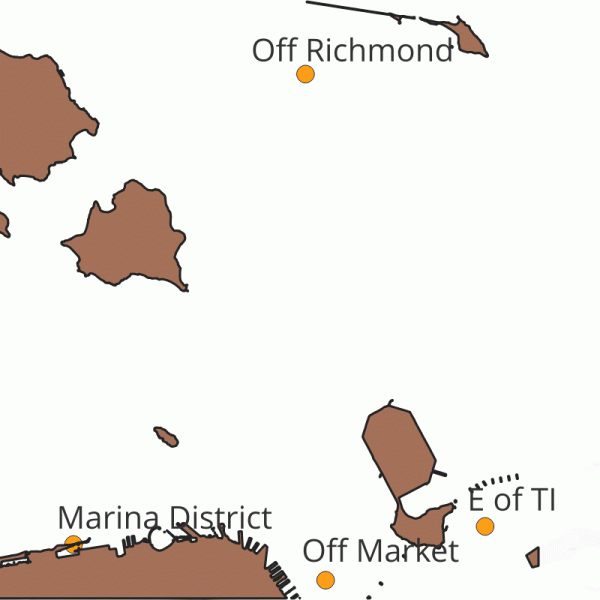
Boats off Market Street and east of Treasure Island both have direct line of sight to something off Richmond, and their VHF will likely be heard there if they use enough power. But they won’t be heard in the Marina District, because San Francisco has Telegraph Hill and Yerba Buena Island in the way, without even getting into all the buildings:
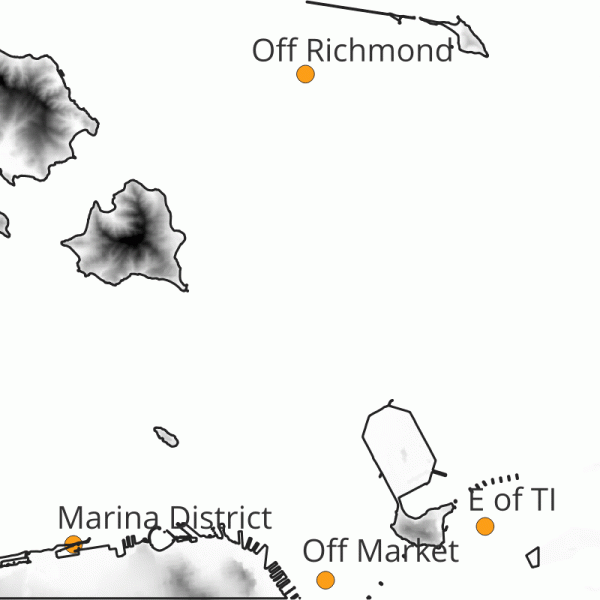
The shading here shows elevation. But it is even clearer when looking at the elevation profile, the graph of the hill height vs. distance, from the “Off Market” boat back to the Marina District.
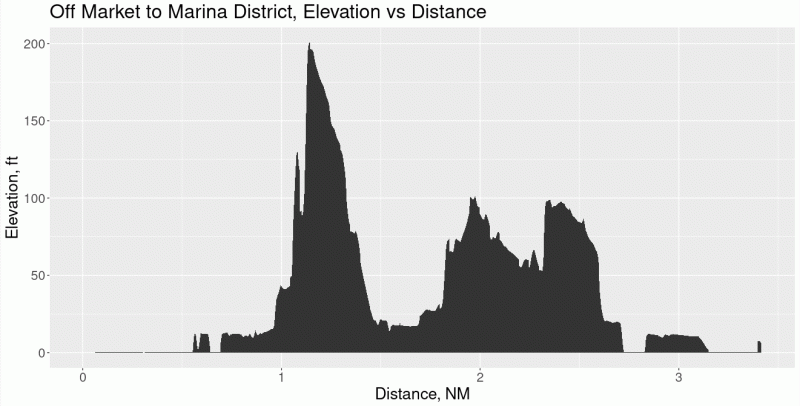
And here’s the equivalent for east of Treasure Island:
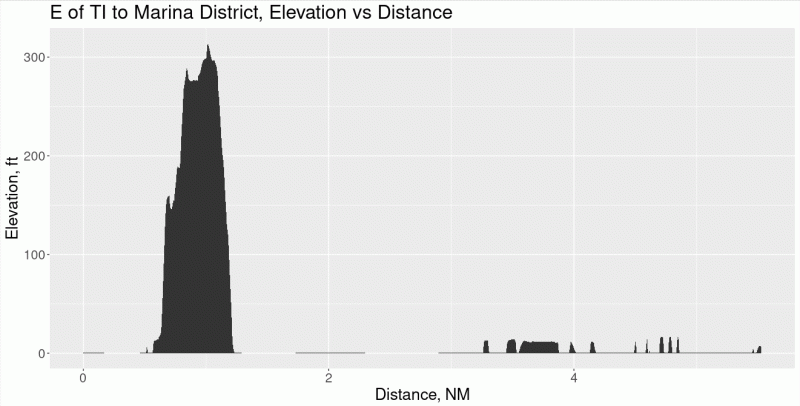
Those hillsides, and the buildings on them, will block VHF radio transmissions. While there’s some diffraction, this isn’t a recipe for radio success between off-the-shelf fiberglass or rubber ducky antennas at sea level.
Send a text to the number in the sailing instructions if you have to retire, as soon as it is safe to do so.
Skippers’ Meeting
The SSS will run a competitors’ meeting on Wednesday, January 22, at Oakland YC in Alameda from 7 to 9 p.m.
The race committee will talk about the race, and may give a little advice of their own. But even better, you’ll meet other competitors, who often have a lot of their advice to share. Plus you’ll have a chance to get some free swag: The RC says they plan some random drawings among registered skippers who attend.
So make a point of going to the competitors’ meeting.
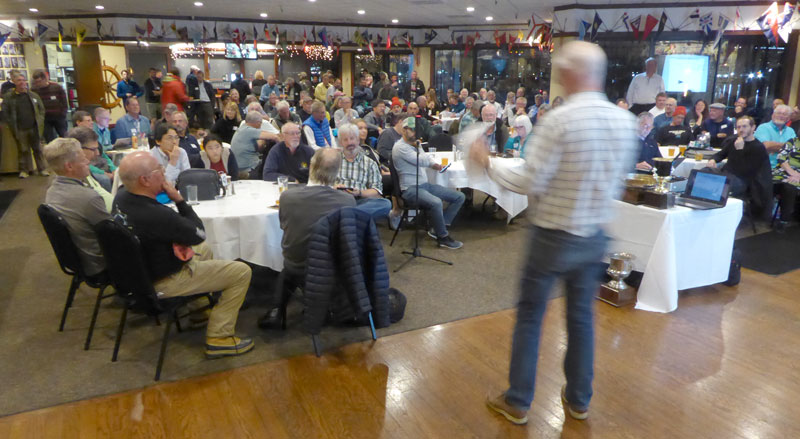
It’ll Be Ebbing
Because this is the Three Bridge Fiasco, you have three marks to round. You can round them in any direction and order of your choice.
The predicted currents show a lot of ebb.
Which brings us to a last bit of advice, which we first heard from Bay Area sailmaker and racing guru Kame Richards at past skippers’ meetings: If you do not have a better plan, your first mark should probably be the mark closest to where you keep your boat.
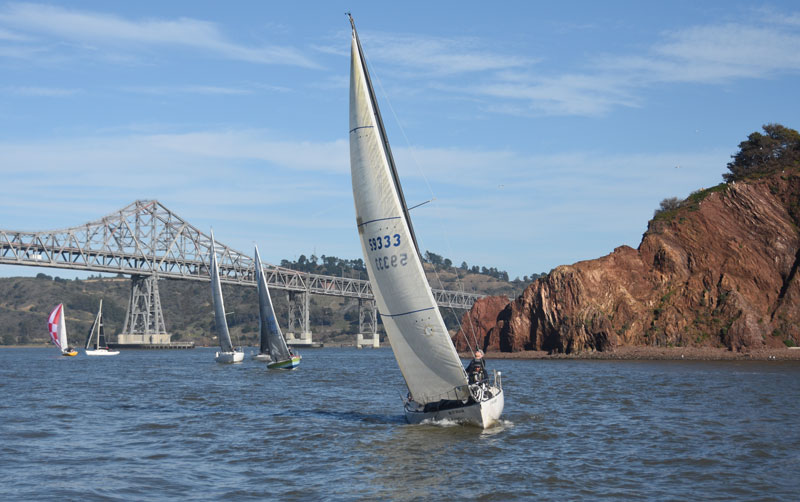

So you are saying that text is better?? Ha ha
@latitude38 I believe the competitors’ meeting would be on Wednesday, January 22 not February, as is currently written.
Oops. Cameron, Thanks for the heads up – it’s been fixed.
As PRO for the Drakes Bay Race, I am very very grateful for this article about the use of text over VHF. Communications is a huge problem in such a remote area, but text is reliably good. Many thanks for this article Christine !